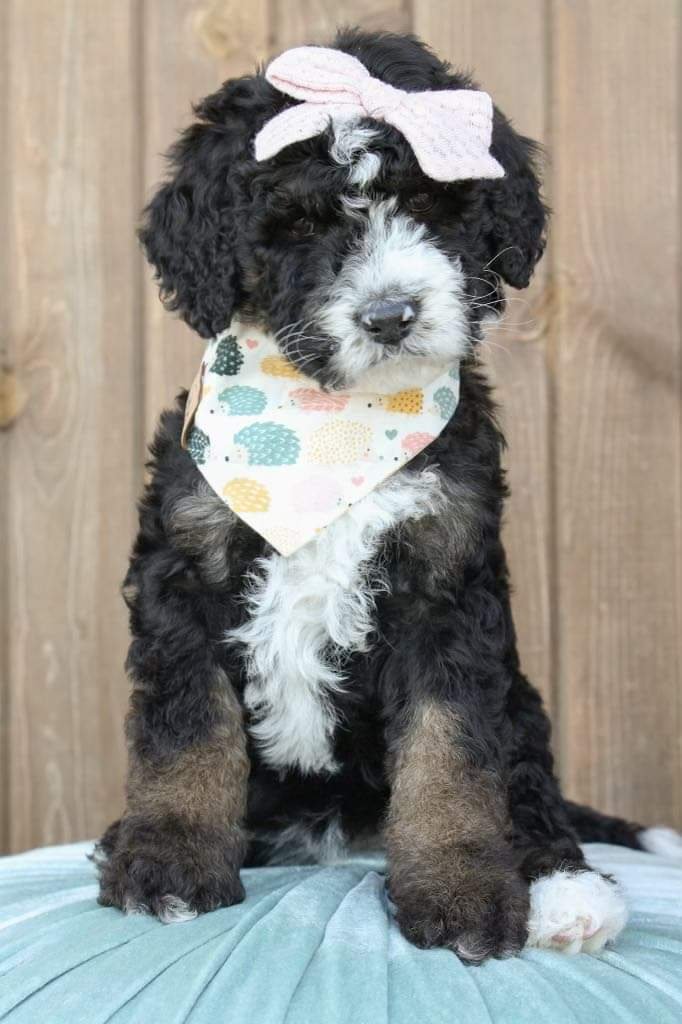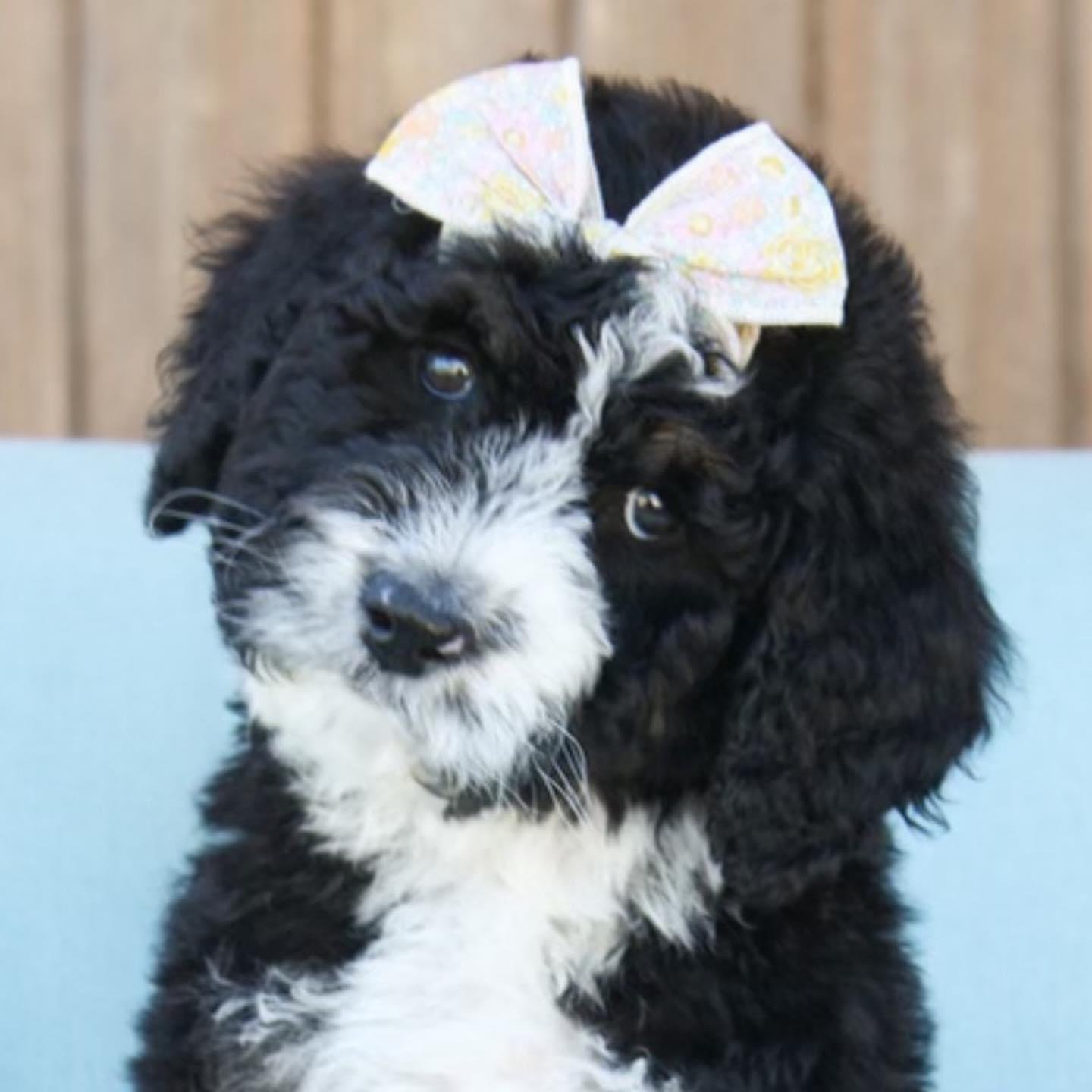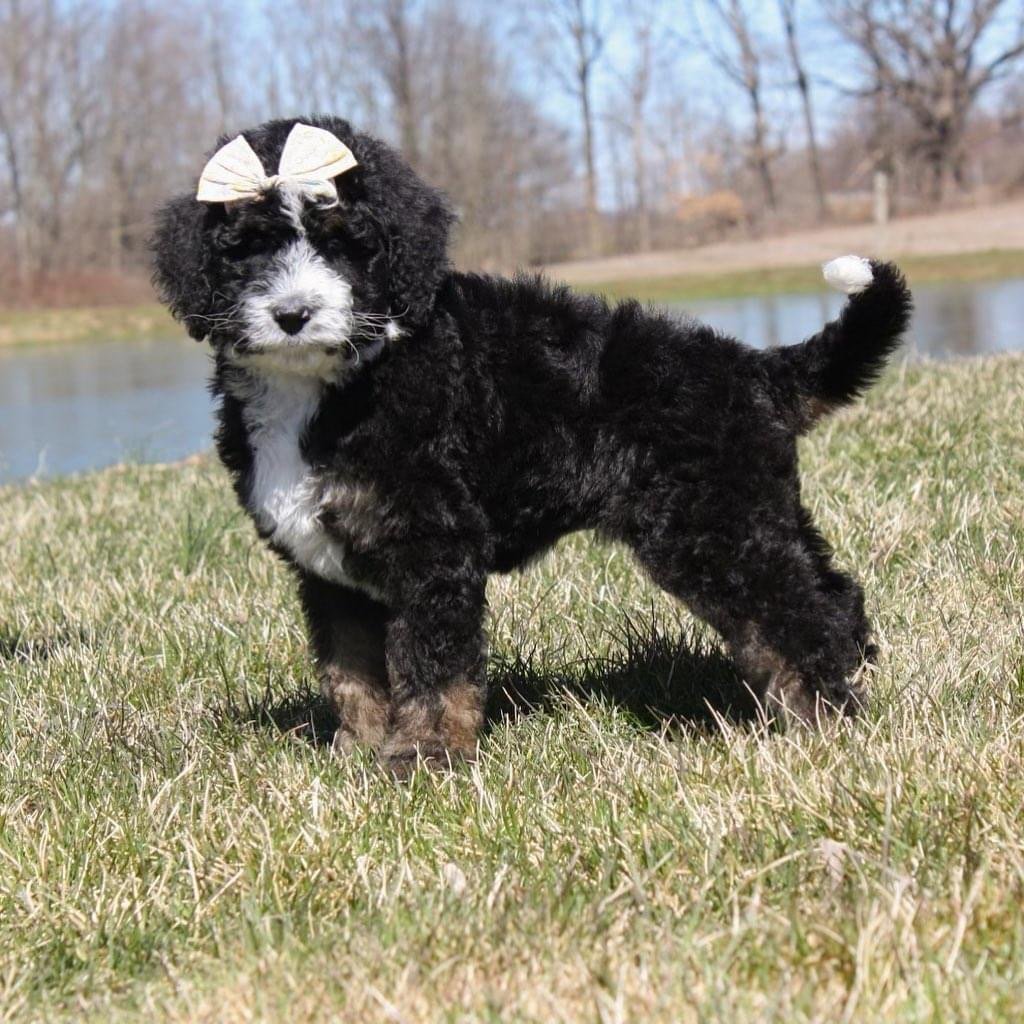
Neurological Stimulation Training
Why do puppies need Neurological Stimulation?
Neurological Stimulation helps produce puppies that have greater tolerance of stress throughout their lifetime. Research shows that puppies with neurological stimulation have more resistance to disease, a more responsive adrenal system, and a stronger heart rate and heartbeat. The methods we use are proven by science and experience to promote the best outcomes for our puppies. We start introducing our puppies to positive touch before they are even born by rubbing on mom’s side during late pregnancy. See below for what each week of the puppies lives consist of for neurological stimulation:
Weeks 1 & 2:
It is important to teach puppies early on that human touch is not only to be regularly expected, but can likewise be a very mutually enjoyable, worthwhile and rewarding experience, helping to form a strong foundational bond for the ongoing positive puppy parenting that is to come. From the very beginning, handling our newborn puppies every day in a gentle and loving manner sets the puppy up for a lifetime of health & happiness.
We complete the following, a minimum of (1-2) times per day, with the puppies: We carefully begin by touching the puppy all over their body and touching between the puppy’s paws and paw pads. We then lift each puppy up in front of us for 3-5 seconds, holding it mid-air. We continue by laying the puppy upon their back in pour lap and carefully begin to rub their belly and softly stretch out their legs. Lastly we place each puppy on both warm and cold items to socialize them to various temperatures and textures.
Week 3:
Research shows puppies begin seeing at ~2 weeks of age and start hearing at ~3 weeks old. It is important for us to spend time during these development stages to begin introducing them to many new sights, sounds, smells, things, and people. We continue the daily handling exercises as outlined above to ensure proper stimulation. We slowly begin to introduce a new toy or object everyday into the whelping box. We practice startling the puppies in a friendly way, and watch their recovery times. For example, we use rattle keys, drop toys, shut doors, start vacuums, etc. Puppies may initially startle react, but should subsequently investigate. At this time we also begin to separate puppies from the litter for 5-10 minutes a minimum of (2) times during the week.
Week 4:
Research states that by the time a newborn puppy turns ~4 weeks old, they are ready to start the weaning process from their mother’s milk and continual care. Therefore, it’s time for us to gradually introduce solid foods, among other fun and exciting things too. We start this process by adding water to their puppy kibble. This process ensures that their kibble is softened, so the pups can easily eat it when their teeth are not fully developed. After this, we gradually wean puppies over the upcoming couple of weeks by separating them from their mother for up to multiple hours at a time. At this time we also begin to introduce new objects daily to the pups. Making random puppy challenges like a food puzzles, tunnels, bridges, or barriers to cross in order to obtain toys and treats as a way to encourage thinking. We start to use the words, HERE, COME, PUPPY and YES. We wait for the puppies to sit, and mark “YES!” And then give a treat – repeat regularly.
Week 5:
In week five, puppies are beginning to experience their first period of fear. It is important that the puppies are gradually and safely socialized to the world around them. We keep on performing all the exercises and activities from the previous weeks as more practice will undoubtedly make for all the better behaved puppies long into the future. We introducing new things regularly and specifically watch for any signs of fear. During this week, our puppies first vaccine has been implemented, so we can begin to introduce them to family members that don’t live within our household. We increase our level of people interaction and handling with each puppy daily and continue separating them from one another for longer periods of time regularly as appropriate.
Week 6:
This week the pups work on transition and training. We continue with each of the previously outlined exercises and activities as practice makes perfect and it’s much easier to build better behaviors than deal with breaking bad habits. Puppies are now eating full kibble this week as their teeth are all in. Crate training is a great way to help with potty training when our pup enters your home, and we slowly begin to implement crate training into your puppies everyday routine. In week six, puppies get to go outside and start learning to go potty outside. We believe that it is critical that our pups are being socialized to grass and know that is their proper potty area. This helps you have a successful potty training experience when they join your family. (:
Week 7:
This week we begin introducing our puppies to collars and leashes. These key items will play a huge part in their transitions. We continue with each of the previously outlined exercises and activities, as these will do so much good toward the long-term healthiness & happiness of the puppies. We also begin to implement the puppies sleeping in crates at night. We give the puppies 1-2 potty breaks throughout the night, taking them out and bringing them right back into their crates with no playtime in between. This ensure a successful transition into your home.
Week 8:
Week eight is a bittersweet time for us. This week puppies begin to join their forever families, and while we are SO exited for this - we also miss them dearly! These puppies are a huge part of our life and family, so we truly hope you stay in contact regularly as we love watching our beautiful puppies grow up within their new families. (:








